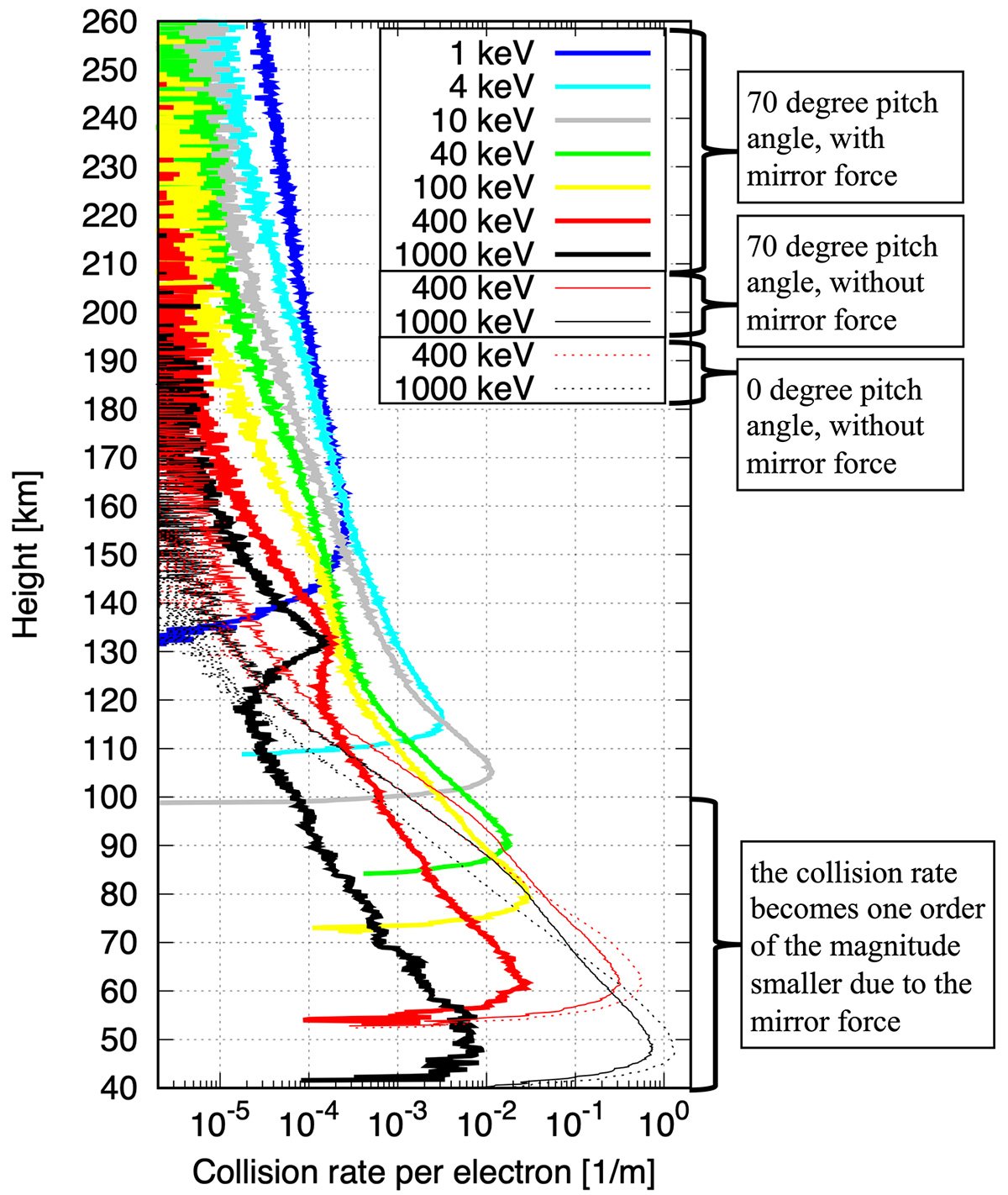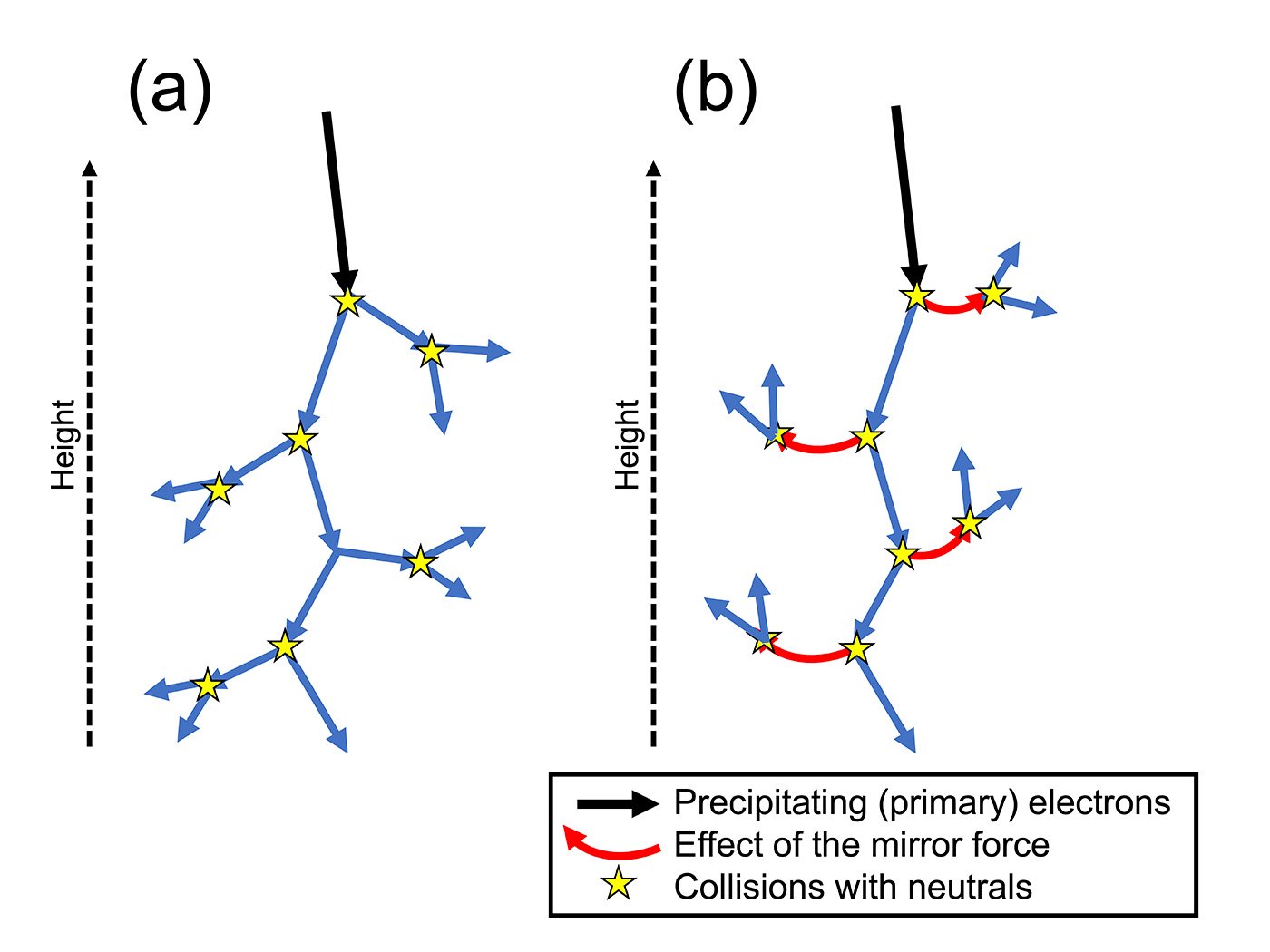Understanding the ionosphere high in the Earth's atmosphere is important due to its effects on communications systems, satellites and crucial chemical features including the ozone layer. New insights into the activity of high energy electrons have come from a simulation study led by geophysicist Yuto Katoh at Tohoku University, reported in the journal Earth, Planets and Space.
"Our results clarify the unexpected role of the geomagnetic field surrounding the Earth in protecting the atmosphere from high energy electrons," says Katoh.
The ionosphere is a wide region between roughly 60 and more than 600 kilometers above the Earth's surface. It contains electrically charged particles that are a mixture of ions and free electrons generated by the interaction of the atmosphere with radiation from the sun.
Polar regions of the ionosphere are subjected to a particularly steady and energetic stream of incoming electrons in a process called electron precipitation. These 'relativistic' electrons move at close to the speed of light, where the effects of Einstein's relativity theory become ever more significant. They collide with gas molecules and contribute to many phenomena in the ionosphere, including colourful auroral displays. The processes are heavily influenced by the effects of the geomagnetic field on the charged particles involved.

The Tohoku team, with colleagues in Germany and other institutions in Japan, developed a sophisticated software code that focused particular attention on simulating the effects of a relatively unstudied 'mirror force' on the electron precipitation. This is caused by the magnetic force acting on charged particles under the influence of the geomagnetic field.
The simulations demonstrated how the mirror force causes relativistic electrons to bounce back upwards, to an extent dependent on the angles at which the electrons arrive. The predicted effects mean that electrons collide with other charged particles higher in the ionosphere than previously suspected.
Illustrating one example of the significance of this work, Katoh comments: "Precipitating electrons that manage to pass through the mirror force can reach the middle and lower atmosphere, contributing to chemical reactions related to variations in ozone levels." Decreased ozone levels at the poles caused by atmospheric pollution reduce the protection ozone offers living organisms from ultraviolet radiation.
Katoh emphasizes the key theoretical advance of the research is in revealing the surprising significance of the geomagnetic field and the mirror force in protecting the lower atmosphere from the effects of electron precipitation activities by keeping them further away.
"We have now started a project to combine the simulation studies used in this work with real observations of the polar ionosphere to build even deeper understanding of these crucial geophysical processes," says Katoh.

- Publication Details:
Title: Effect of the mirror force on the collision rate due to energetic electron precipitation: Monte Carlo simulations
Authors: Yuto Katoh, Paul Simon Rosendahl, Yasunobu Ogawa, Yasutaka Hiraki, Hiroyasu Tadokoro
Journal: Earth, Planets, and Space
DOI: 10.1186/s40623-023-01871-y






